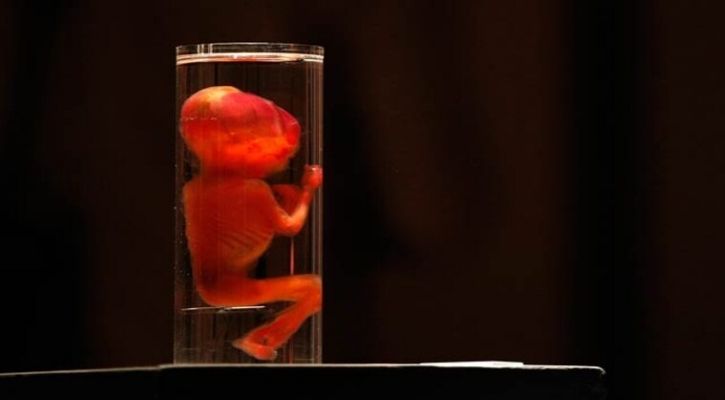Scientists Grow Human Embryo in Lab, Sperm, Egg, or Womb
Groundbreaking Research Offers New Insights into Early Embryonic Development

Researchers have achieved a groundbreaking feat by growing an entity that closely mimics an early human embryo using stem cells, entirely devoid of sperm or eggs. The Weizmann Institute team claims that their stem cell-derived “embryo model” strikingly resembles a textbook representation of a genuine 14-day-old human embryo.
Remarkably, this artificial embryo model even produced hormones that triggered a positive result in a laboratory pregnancy test.
The primary objective behind creating these embryo models is to establish an ethical framework for comprehending the early stages of human life. During the first few weeks after fertilization, the transformation from a cluster of indistinct cells to an entity discernible through a baby ultrasound occurs—a period shrouded in mystery yet closely linked to miscarriages and birth abnormalities.
Prof Jacob Hanna of the Weizmann Institute of Science notes that this early period of embryonic development remains enigmatic, with limited knowledge available. He states, “It’s a black box, and that’s not a cliché – our knowledge is very limited.”
Embryo research is laden with technical, moral, and legal complexities, but it is rapidly progressing to replicate natural embryonic growth. The Israeli team’s research, published in the journal Nature, introduces what they describe as the first “complete” embryo model, encompassing all key structures that manifest in early-stage embryos.
Instead of using traditional sperm and egg cells, the researchers initiated the process with naive stem cells that had been genetically altered to possess the potential to develop into any bodily tissue. Subsequently, chemicals were employed to coax these stem cells into generating the four essential cell types observed in early human embryos:
1. Epiblast cells, which form the embryo proper.
2. Trophoblast cells, responsible for placental development.
3. Hypoblast cells, which give rise to the supportive yolk sac.
4. Extraembryonic mesoderm cells.
Carefully combining 120 of these cells in a specific ratio, the scientists observed an astonishing occurrence—approximately 1% of the cell mixture spontaneously initiated self-organization into a structure closely resembling, yet distinct from, a human embryo.
Prof Hanna commends the cells for their remarkable behavior, emphasizing the importance of the right cellular composition and environmental conditions in facilitating this phenomenon.
The scientific community anticipates that these embryo models will provide invaluable insights into genetic and hereditary diseases, the earliest stages of organ development, and the origins of diverse cell types.
